Visa policy of the United States


The visa policy of the United States deals with the requirements which a foreign national wishing to enter the United States must meet to obtain a visa, which is a permit to travel to, enter and remain in the United States. Visitors to the United States must obtain a visa from one of the United States diplomatic missions unless they come from one of the visa exempt countries or Visa Waiver Program countries. The same rules apply to Puerto Rico and the United States Virgin Islands while slightly different rules apply to Guam, Northern Mariana Islands and American Samoa.[1]
The United States gives a visitor visa exemption to:
- Citizens of the Compact of Free Association states: Federated States of Micronesia, the Marshall Islands, and Palau
- Citizens of Canada, including those applying for TN status at the border
- Citizens of one of the 38 countries that are part of the Visa Waiver Program
- Citizens of The Bahamas, Bermuda, British Virgin Islands, Cayman Islands and Turks and Caicos Islands under certain conditions
- Holders of a Form I-512 ("Authorization for Parole of an Alien into the United States")
History
The "Immigration Act of 1990" (see Immigration Act of 1990) attracted thousands of immigrants who have the skills to help enhance the economic life of the US. This law made it easier for family reunification and skilled professionals to enter the United States. This allocated 55,000 immigrant visas to citizens of nations which previously had little immigration in the past. Later on, provisions made to the Immigration Act of 1990 had closed America's doors to many immigrants.[2]
Overview
Entry visas
United States visas were issued to 8.9 million foreign nationals visiting the United States and to 482,000 immigrants in 2012.[3] A foreign national wishing to enter the U.S. must obtain a visa unless he or she is
- a citizen of one of the thirty-eight Visa Waiver Program countries
- a citizen of Canada, the Republic of the Marshall Islands, the Federated States of Micronesia, or Palau
- a British Overseas Territories Citizen from Bermuda or the Cayman Islands
- a citizen of the Bahamas or a British Overseas Territories Citizen from the Turks and Caicos Islands (if traveling directly to the U.S. from their respective countries with a valid passport and police certificate issued within six months of time of travel certifying they do not have a serious criminal record)
- a permanent resident of the U.S.
- eligible for visa-free travel under other laws.
There are separate requirements for Mexican citizens.[4]
While there are about 185 different types of visas,[5] there are two main categories of U.S. visas:
- Nonimmigrant visa - for temporary visits such as for tourism, business, work or studying.
- Immigrant visa - for people to immigrate to the United States. At the port of entry, the immigrant visa holder is processed for a permanent resident card (I-551, often known as a 'green card'). Upon endorsement (CBP admission stamp) it serves as temporary I-551 evidencing permanent residence for 1 year.
In order to immigrate, one should either have an immigrant visa or have a dual intent visa, which is one that is compatible with making a concurrent application for permanent resident status, or having an intention to apply for permanent residence.
Entering the U.S. on an employment visa may be described as a three-step process in most cases.[5] First, the employer files an application with U.S. Citizenship and Immigration Services requesting a particular type of category visa for a specific individual.[5] If the employer's application is approved, it only authorizes the individual to apply for a visa; the approved application is not actually a visa.[5] The individual then applies for a visa and is usually interviewed at a U.S. embassy or consulate in the native country.[5] If the embassy or consulate gives the visa, the individual is then allowed to travel to the U.S.[5] At the border crossing, airport, or other point of entry into the U.S., the individual speaks with an officer from U.S. Customs and Border Protection to ask to admission to the U.S.[5] If approved, the individual may then enter the U.S.[5]
Contrary to a popular misconception, a U.S. visa does not authorize the alien's entry to the United States, nor does it authorize the alien's stay in the U.S. in a particular status. A U.S. visa only serves as a preliminary permission given to the alien to travel to the United States and to seek admission to the United States at a designated port of entry.[6] The final admission to the United States in a particular status and for a particular period of time is made at the port of entry by a U.S. Customs and Border Protection (CBP) officer. For aliens entering the U.S. in a nonimmigrant visa status these details are recorded by the CBP officer on the alien's Form I-94 (Form I-94W for citizens of the Visa Waiver Program countries entering the U.S. for short visits), which serves as the official document authorizing the alien's stay in the United States in a particular non-immigrant visa status and for a particular period of time.[7] 50,000 additional visas are available each year under the visa lottery program. In the last few years more than 9 million people have participated in the visa lottery.[8]
Exit visas
Exit visas are not required.
However, the U.S. government has required all foreign and U.S. nationals departing the US by air to hold a valid passport (or certain specific passport replacing documents) since October 1, 2007. Even though travelers might not require a passport to enter a certain country, they will require a valid passport booklet (booklet only, U.S. Passport Card not accepted) when attempting to depart the U.S. in order to satisfy the U.S. immigration authorities.[9] Exemptions to this requirement to hold a valid passport booklet include:
- U.S. Permanent Resident/Resident Alien Card (Form I-551);
- U.S. Military ID Cards when traveling on official orders;
- U.S. Merchant Mariner Card;
- NEXUS Card;
- U.S. Travel Document:
- Refugee Travel Document (Form I-571); or
- Permit to Re-Enter (Form I-327)
- Emergency Travel Document (e.g. Consular Letter) issued by a Foreign Embassy or Consulate specifically for the purpose of travel to the bearer's home country.
- Nationals of Mexico holding one of the following documents:
- (expired) Matricula Consular; or
- Birth Certificate with consular registration; or
- Certificate of Nationality issued by a Mexican consulate abroad; or
- Certificate of Military Duty (Cartilla Militar); or
- Voter's Certificate (Credencial IFE or Credencial para Votar).
Visa exemption

Four countries and one British Overseas Territory have visa exemption access to the United States, including three that are linked with Compacts of Free Association.[10]
Citizens of ![]() Canada do not require a visa to enter the United States under most circumstances, and can work under special simplified procedure.[11] They may use a NEXUS Card to enter the country from Canada by land, water or by air on a flight that has been precleared in Canada.[12][13][14]
Canada do not require a visa to enter the United States under most circumstances, and can work under special simplified procedure.[11] They may use a NEXUS Card to enter the country from Canada by land, water or by air on a flight that has been precleared in Canada.[12][13][14]
British Overseas Territories citizens with a connection to ![]() Bermuda can enter the United States visa-free under most circumstances.[11] To qualify, they must present a Bermudian passport which fulfils the following criteria: the front cover has printed on it "Government of Bermuda", the holder's nationality must be stated as either "British Overseas Territory Citizen" or "British Dependant Territories Citizen", the passport must contain one of the following endorsement stamps: "Holder is registered as a Bermudian", "Holder Possesses Bermudian Status" or "Holder is deemed to possess Bermudian status".[15]
Bermuda can enter the United States visa-free under most circumstances.[11] To qualify, they must present a Bermudian passport which fulfils the following criteria: the front cover has printed on it "Government of Bermuda", the holder's nationality must be stated as either "British Overseas Territory Citizen" or "British Dependant Territories Citizen", the passport must contain one of the following endorsement stamps: "Holder is registered as a Bermudian", "Holder Possesses Bermudian Status" or "Holder is deemed to possess Bermudian status".[15]
Citizens of the following countries, linked with the USA by the Compacts of Free Association, do not require a visa to enter, reside, study, and work indefinitely in the United States:
Visa Waiver Program
Currently, 38 countries have been selected by the U.S. government for inclusion in the Visa Waiver Program and their citizens do not need to acquire a US visa (but are required to get an electronic authorization if arriving by air or cruise ship[19]) to visit the United States (including Puerto Rico and U.S. Virgin Islands):[20]
Visitors may stay for 90 days in the United States which also includes the time spent in Canada, Mexico, Bermuda, or the islands in the Caribbean if the arrival was through the United States.
The Electronic System for Travel Authorization (ESTA) is not a visa. Rather, obtaining a travel authorization from ESTA is a prerequisite to travelling by air or sea to the US under the Visa Waiver Program.[43] ESTA authorization, once obtained, is valid for two years unless during that time the person obtains a new passport or his/her answers to any of the eligibility questions change.[44] VWP does not apply if a passenger is not arriving on an approved air or sea carrier.
The United States Department of Homeland Security extended the scope of the Visa Waiver Program Improvement and Terrorist Travel Prevention Act. As of January 2016, visa waivers do not apply where a person has previously traveled to Iran, Iraq, Libya, Somalia, Sudan, Syria or Yemen on or after 1 March 2011 or for those who remain nationals of Iran, Iraq, Sudan and Syria in addition to the nationality that would otherwise entitle them to a visa waiver. Instead, they are now required to go through the strict process in order to obtain a visa.[45] Certain categories such as diplomats, military, journalists, humanitarian workers or legitimate businessmen may have their visa requirement waived by the Secretary of Homeland Security.[46]
Other arrangements
Citizens of the following countries and territories can travel without obtaining a visa for the United States under certain circumstances:
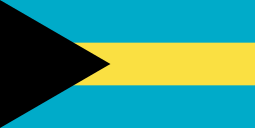 Bahamas – Citizens do not require a visa to enter the United States if they apply for entry at one of the Preclearance Facilities located in Nassau or Freeport International Airports. Bahamian citizens must not have had a criminal conviction or ineligibility, violated U.S. immigration laws in the past and must be in possession of valid, unexpired passport or a Bahamian Travel Document indicating that they have Bahamian citizenship. In addition to a passport, all applicants 14 years of age or older must present a police certificate issued by the Royal Bahamas Police Force within the past six months. All Bahamians applying for admission at a port-of-entry other than the pre-clearance facilities located in Nassau or Freeport International airports are required to be in possession of a valid visa to enter the United States.[47]
Bahamas – Citizens do not require a visa to enter the United States if they apply for entry at one of the Preclearance Facilities located in Nassau or Freeport International Airports. Bahamian citizens must not have had a criminal conviction or ineligibility, violated U.S. immigration laws in the past and must be in possession of valid, unexpired passport or a Bahamian Travel Document indicating that they have Bahamian citizenship. In addition to a passport, all applicants 14 years of age or older must present a police certificate issued by the Royal Bahamas Police Force within the past six months. All Bahamians applying for admission at a port-of-entry other than the pre-clearance facilities located in Nassau or Freeport International airports are required to be in possession of a valid visa to enter the United States.[47]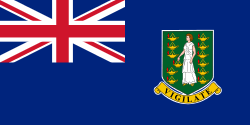 British Virgin Islands - British Overseas Territories Citizens by virtue of their connection to the British Virgin Islands may travel without a visa to the United States Virgin Islands. They may also continue travel to other parts of the United States if they present a Certificate of Good Conduct issued by the Royal Virgin Islands Police Department indicating no criminal record.[48][49]
British Virgin Islands - British Overseas Territories Citizens by virtue of their connection to the British Virgin Islands may travel without a visa to the United States Virgin Islands. They may also continue travel to other parts of the United States if they present a Certificate of Good Conduct issued by the Royal Virgin Islands Police Department indicating no criminal record.[48][49]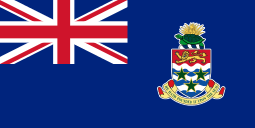 Cayman Islands – Whilst residents of the Cayman Islands, as British Overseas Territories Citizens, are eligible automatically to register as a full British citizen under Section 4(A) of the British Overseas Territories Act 2002, thereby able additionally to enter the United States under the Visa Waiver Program, they can alternatively enter visa-free using their Cayman Islands passports. To qualify under the latter method, their Cayman Islands passports must confirm their British Overseas Territories citizenship and be endorsed by the Cayman Islands Passport and Corporate Services Office with a Cayman-U.S. visa waiver, issued at a cost of 25 Cayman Islands dollars and valid for one entry.[50][51] They must travel directly between the Cayman Islands and the United States and their Cayman Islands passport must also have a validity of at least six months beyond their intended departure date from the United States.[52] If Cayman Islanders elect to enter the U.S. using the Cayman-U.S. visa waiver, they are not required to apply for an ESTA online, since they are not entering under the VWP.
Cayman Islands – Whilst residents of the Cayman Islands, as British Overseas Territories Citizens, are eligible automatically to register as a full British citizen under Section 4(A) of the British Overseas Territories Act 2002, thereby able additionally to enter the United States under the Visa Waiver Program, they can alternatively enter visa-free using their Cayman Islands passports. To qualify under the latter method, their Cayman Islands passports must confirm their British Overseas Territories citizenship and be endorsed by the Cayman Islands Passport and Corporate Services Office with a Cayman-U.S. visa waiver, issued at a cost of 25 Cayman Islands dollars and valid for one entry.[50][51] They must travel directly between the Cayman Islands and the United States and their Cayman Islands passport must also have a validity of at least six months beyond their intended departure date from the United States.[52] If Cayman Islanders elect to enter the U.S. using the Cayman-U.S. visa waiver, they are not required to apply for an ESTA online, since they are not entering under the VWP.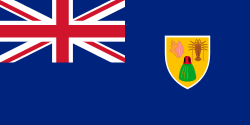 Turks and Caicos Islands – British Overseas Territories Citizens by virtue of their connection to the Turks and Caicos Islands can enter the United States visa-free for short business and pleasure.[53] To qualify, they must not have had a criminal conviction or ineligibility, not violated U.S. immigration laws in the past and must arrive in the United States on a direct flight from the territory. In addition, they must present a Turks and Caicos Islands passport or a travel document which states that they are a British Overseas Territory citizen and have the right to abode in the Turks and Caicos Islands. In addition to a valid, unexpired passport, all travelers 14 years of age or older must present a police certificate issued by the Royal Turks and Caicos Islands Police Force within the past six months. All British Overseas Territories Citizens of the Turks and Caicos Islands who apply for admission at a port-of-entry that does not have direct air service to/from the territory, are required to be in possession of a valid visa to enter the United States.
Turks and Caicos Islands – British Overseas Territories Citizens by virtue of their connection to the Turks and Caicos Islands can enter the United States visa-free for short business and pleasure.[53] To qualify, they must not have had a criminal conviction or ineligibility, not violated U.S. immigration laws in the past and must arrive in the United States on a direct flight from the territory. In addition, they must present a Turks and Caicos Islands passport or a travel document which states that they are a British Overseas Territory citizen and have the right to abode in the Turks and Caicos Islands. In addition to a valid, unexpired passport, all travelers 14 years of age or older must present a police certificate issued by the Royal Turks and Caicos Islands Police Force within the past six months. All British Overseas Territories Citizens of the Turks and Caicos Islands who apply for admission at a port-of-entry that does not have direct air service to/from the territory, are required to be in possession of a valid visa to enter the United States.
Guam and Northern Mariana Islands Visa Waiver Program
The U.S. territories of Guam and the Northern Mariana Islands have a specific Guam-Northern Mariana Islands Visa Waiver Program too. Under this program, first enacted in October 1988 and periodically amended, nationals from several additional countries in Asia and the Pacific islands are permitted to enter the Northern Marianas and Guam as tourists without a visa for up to 45 days. Travel is not permitted onwards to the mainland United States, and because of special visa categories for the Northern Mariana Islands foreign workers, traveling between Guam and the Northern Mariana Islands still requires a full immigration inspection.[54] In addition to the citizens of Australia, Brunei, Japan, New Zealand, the Republic of Korea, Singapore, Taiwan and the United Kingdom who are also eligible for the Visa Waiver Program (but do not require ESTA for Guam and Northern Mariana Islands), citizens of the following countries and territories are eligible only for the Guam-CNMI Visa Waiver Program:[55][56]
 Russia - despite not being included in the new Guam-CNMI visa waiver program, as part of a parole arrangement, Russian citizens in possession of a machine-readable passport, a completed Form I-736 (Guam-CNMI Visa Waiver Information form) and Form I-94 (Arrival-Departure Record) and a non-refundable and non-transferable return ticket can visit both Guam and the Northern Mariana Islands visa-free for up to 45 days.[57]
Russia - despite not being included in the new Guam-CNMI visa waiver program, as part of a parole arrangement, Russian citizens in possession of a machine-readable passport, a completed Form I-736 (Guam-CNMI Visa Waiver Information form) and Form I-94 (Arrival-Departure Record) and a non-refundable and non-transferable return ticket can visit both Guam and the Northern Mariana Islands visa-free for up to 45 days.[57] China - Chinese citizens in possession of a machine-readable passport, completed Form I-736 (Guam-CNMI Visa Waiver Information form) and Form I-94 (Arrival-Departure Record) may enter the CNMI only visa-free for up to 45 days (travel to Guam still requires applying for a visa in advance).[58]
China - Chinese citizens in possession of a machine-readable passport, completed Form I-736 (Guam-CNMI Visa Waiver Information form) and Form I-94 (Arrival-Departure Record) may enter the CNMI only visa-free for up to 45 days (travel to Guam still requires applying for a visa in advance).[58]
American Samoa
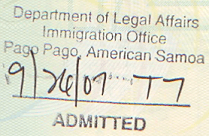
The visa waiver does not apply to American Samoa.
Nationals of the following countries arriving for tourism purposes only do not require a visa (they are issued with a 30-day entry permit on arrival): Andorra, Australia, Austria, Belgium, Brunei, Canada, Denmark, Finland, France, Germany, Iceland, Ireland, Italy, Japan, Liechtenstein, Luxembourg, Marshall Islands, Micronesia, Monaco, Netherlands, New Zealand, Norway, Palau, Portugal, San Marino, Singapore, Slovenia, Spain, Sweden, Switzerland and United Kingdom.[59]
Alaska
Residents of the Chukotka Autonomous Okrug in Russia who are members of the indigenous population do not require a visa to visit Alaska if they have relatives (blood relatives, members of the same tribe, native people who have similar language and cultural heritage) in Alaska. Entry points are in Gambell and Nome.[60]
Individuals must be invited by a relative in Alaska, must notify local authorities at least ten days before traveling to Alaska, and must leave Alaska within 90 days.[60]
The agreement establishing this policy was signed by Russia and the United States on 23 September 1989. The United States made it effective as of 17 July 2015.[60]
Summary of visa exemptions
| Country or territory | Overland | Air/Cruise ship | All means of transport | |||
|---|---|---|---|---|---|---|
| United States and Puerto Rico |
United States Virgin Islands |
Guam | Northern Mariana Islands |
American Samoa | ||
| Yes | Yes | Yes | Yes | Yes | Yes | |
| Yes | Yes | Yes | Yes | Yes | Yes | |
| Yes | Yes | Yes | Yes | Yes | Yes | |
| Yes | Yes | Yes | Yes | Yes | Yes | |
| Yes | Yes | Yes | Yes | Yes | No | |
| Yes | electronic authorization | electronic authorization | Yes | Yes | Yes | |
| Yes | electronic authorization | electronic authorization | Yes | Yes | Yes | |
| Yes | electronic authorization | electronic authorization | Yes | Yes | Yes | |
| Yes | electronic authorization | electronic authorization | Yes | Yes | Yes | |
| Yes | electronic authorization | electronic authorization | Yes | Yes | Yes | |
| Yes | electronic authorization | electronic authorization | Yes | Yes | Yes | |
| Yes | electronic authorization | electronic authorization | Yes | Yes | No | |
| Yes | electronic authorization | electronic authorization | Yes | Yes | No | |
| Yes | electronic authorization | electronic authorization | electronic authorization | electronic authorization | Yes | |
| Yes | electronic authorization | electronic authorization | electronic authorization | electronic authorization | Yes | |
| Yes | electronic authorization | electronic authorization | electronic authorization | electronic authorization | Yes | |
| Yes | electronic authorization | electronic authorization | electronic authorization | electronic authorization | Yes | |
| Yes | electronic authorization | electronic authorization | electronic authorization | electronic authorization | Yes | |
| Yes | electronic authorization | electronic authorization | electronic authorization | electronic authorization | Yes | |
| Yes | electronic authorization | electronic authorization | electronic authorization | electronic authorization | Yes | |
| Yes | electronic authorization | electronic authorization | electronic authorization | electronic authorization | Yes | |
| Yes | electronic authorization | electronic authorization | electronic authorization | electronic authorization | Yes | |
| Yes | electronic authorization | electronic authorization | electronic authorization | electronic authorization | Yes | |
| Yes | electronic authorization | electronic authorization | electronic authorization | electronic authorization | Yes | |
| Yes | electronic authorization | electronic authorization | electronic authorization | electronic authorization | Yes | |
| Yes | electronic authorization | electronic authorization | electronic authorization | electronic authorization | Yes | |
| Yes | electronic authorization | electronic authorization | electronic authorization | electronic authorization | Yes | |
| Yes | electronic authorization | electronic authorization | electronic authorization | electronic authorization | Yes | |
| Yes | electronic authorization | electronic authorization | electronic authorization | electronic authorization | Yes | |
| Yes | electronic authorization | electronic authorization | electronic authorization | electronic authorization | Yes | |
| Yes | electronic authorization | electronic authorization | electronic authorization | electronic authorization | Yes | |
| Yes | electronic authorization | electronic authorization | electronic authorization | electronic authorization | Yes | |
| Yes | electronic authorization | electronic authorization | electronic authorization | electronic authorization | Yes | |
| Yes | electronic authorization | electronic authorization | electronic authorization | electronic authorization | Yes | |
| Yes | electronic authorization | electronic authorization | electronic authorization | electronic authorization | No | |
| Yes | electronic authorization | electronic authorization | electronic authorization | electronic authorization | No | |
| Yes | electronic authorization | electronic authorization | electronic authorization | electronic authorization | No | |
| Yes | electronic authorization | electronic authorization | electronic authorization | electronic authorization | No | |
| Yes | electronic authorization | electronic authorization | electronic authorization | electronic authorization | No | |
| Yes | electronic authorization | electronic authorization | electronic authorization | electronic authorization | No | |
| Yes | electronic authorization | electronic authorization | electronic authorization | electronic authorization | No | |
| Yes | electronic authorization | electronic authorization | electronic authorization | electronic authorization | No | |
| Yes | electronic authorization | electronic authorization | electronic authorization | electronic authorization | No | |
| No | police certificate | Yes | police certificate | police certificate | No | |
| No | preclearance | preclearance | preclearance | preclearance | No | |
| No | police certificate | police certificate | police certificate | police certificate | No | |
| No | police certificate | police certificate | police certificate | police certificate | No | |
| No | No | No | Yes | Yes | No | |
| No | No | No | Yes | Yes | No | |
| No | No | No | Yes | Yes | No | |
| No | No | No | Yes | Yes | No | |
| No | No | No | Yes | Yes | No | |
| No | No | No | No | Yes | No | |
- ↑ British citizens only.
- ↑ Passports containing a national identification number.
- ↑ For holders of Hong Kong Special Administrative Region passports or British National (Overseas) passports only. Must in conjunction hold a Hong Kong Permanent Identity Card.
Outlying islands
Visits to the United States Minor Outlying Islands – Baker Island, Howland Island, Jarvis Island, Johnston Atoll, Kingman Reef, Midway Atoll, Palmyra Atoll, Wake Island and Navassa Island – are severely restricted. Most of the islands are closed off, and prospective visitors require special permits, usually from the US army.[61][62][63][64][65][66][67][68][69][70][71][72][73][74][75][76]
Qualification process
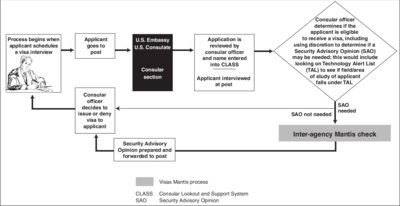
Applicants for visitor visas must show that they qualify under provisions of the Immigration and Nationality Act. The presumption in the law is that every nonimmigrant visa applicant (except certain employment-related applicants, who are exempt) is an intending immigrant unless otherwise proven. Therefore, applicants for most nonimmigrant visas must overcome this presumption by demonstrating that:
- The purpose of their trip is to enter the U.S. for a specific, intended purpose;
- They plan to remain for a specific, limited period; and
- They have a residence outside the U.S. as well as other binding ties which will ensure their return at the end of their stay.
All visit, business, transit, student, and exchange visitor visa applicants must pay a US$160 application fee (up from $140 as of April 2012) to a US Consulate in order to be interviewed by a Consular Officer who will determine if the applicant is qualified to receive a visa to travel to the U.S (additionally, the officer may also ask the United States Department of State for a Security Advisory Opinion, which can take several weeks to resolve). The application fee is increased to $190 for most work visas (up from $150 as of April 2012) and can be even higher for certain categories. If the applicant is rejected, the application fee is not refunded. Amongst the items included in the qualification decision are financial independence, adequate employment, material assets and a lack of a criminal record in the applicant's native country.
Visitor visa statistics
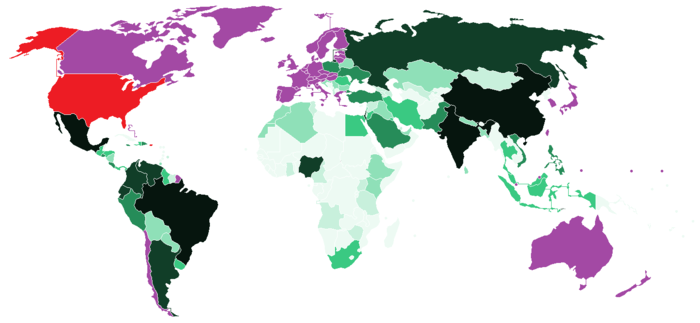
In fiscal 2015 most B-1,2 visas were issued to the nationals of the following countries (listed over 40,000 visas):[77]
| Nationality | Issued B-1,2 visas in 2015 |
|---|---|
| | 2,227,670 |
| | 1,234,885 |
| | 870,008 |
| | 553,385 |
| | 345,233 |
| | 240,115 |
| | 223,854 |
| | 150,458 |
| | 137,439 |
| | 136,409 |
| | 122,147 |
| | 97,936 |
| | 85,303 |
| | 85,140 |
| | 83,483 |
| | 83,139 |
| | 81,861 |
| | 80,936 |
| | 78,118 |
| | 62,714 |
| | 58,139 |
| | 56,287 |
| | 54,027 |
| | 52,943 |
| | 48,735 |
| | 48,432 |
| | 48,239 |
| | 46,433 |
| | 44,795 |
In fiscal 2014 most reasons to refuse a visa were cited as "failure to establish entitlement to nonimmigrant status", "incompatible application" (most overcome), "unlawful presence", "misrepresentation", "criminal convictions", "smugglers" and "controlled substance violators". Smaller number of applications were rejected for "physical or mental disorder", "prostitution", "espionage", "terrorist activities", "falsely claiming citizenship" and other grounds for refusal including "presidential proclamation", "money laundering", "communicable disease" and "commission of acts of torture or extrajudicial killings".[79]
Admission statistics

Highest number of non-immigrant admissions for tourists and for business purposes into the United States in fiscal year 2014 was from the following countries (listed over 700,000 admissions):[80]
| Country | FY 2014 |
|---|---|
| | 18,889,281 |
| | 11,289,743 |
| | 4,549,934 |
| | 3,933,941 |
| | 2,283,086 |
| | 2,275,588 |
| | 2,001,302 |
| | 1,966,335 |
| | 1,576,328 |
| | 1,389,358 |
| | 1,282,485 |
| | 1,111,738 |
| | 955,737 |
| | 924,916 |
| | 726,963 |
| | 766,936 |
| | 730,089 |
| Total (worldwide) | 67,519,113 |
| Statistics of American Samoa 2014[81] | |
|---|---|
| Country | Number of visitors |
| | 20,786 |
| | 14,487 |
| | 3,589 |
| | 978 |
| | 966 |
| | 758 |
| | 615 |
| Total | 65,059 |
| Statistics of Guam[82] | ||
|---|---|---|
| Country/Territory | 2015 | 2014 |
| | 773,019 | 810,856 |
| | 427,900 | 308,037 |
| | 70,246 | 55,192 |
| | 42,205 | 49,136 |
| | 23,698 | 16,280 |
| | 14,334 | 14,761 |
| | 12,427 | 12,079 |
| Total | 1,409,050 | 1,343,092 |
| Statistics of Northern Mariana Islands[83] | ||
|---|---|---|
| Country/Territory | 2015 | 2014 |
| | 186,509 | 170,121 |
| | 182,622 | 142,081 |
| | 80,832 | 109,793 |
| | 19,968 | 20,405 |
| | 2,405 | 694 |
| | 1,374 | 11,200 |
| | 732 | 1,098 |
| Total | 478,592 | 459,240 |
Classes of visas
Nonimmigrant visas
A visa
"A" visas are issued to representatives of a foreign government traveling to the United States to engage in official activities for that government. "A" visas are granted to foreign government ambassadors, ministers, diplomats, as well as other foreign government officials or employees traveling on official business (A-1 Visa). Certain foreign officials require an A visa regardless of the purpose of their trip. The A visa is also granted to immediate family members of such foreign government officials, defined as "the principal applicant's spouse and unmarried sons and daughters of any age who are not members of some other household and who will reside regularly in the household of the principal alien" (A-2 Visa) and which "may also include close relatives of the principal alien or spouse who are related by blood, marriage, or adoption who are not members of some other household; who will reside regularly in the household of the principal alien; and who are recognized as dependents by the sending government (A-3 Visa).[84]
B-1 and B-2
The most common non-immigrant visa is the multiple-purpose B-1/B-2 visa, also known as the "visa for temporary visitors for business or pleasure." Visa applicants sometimes receive either a B-1 (temporary visitor for business) or a B-2 (temporary visitor for pleasure) visa, if their reason for travel is specific enough that the consular officer does not feel they qualify for combined B-1/B-2 status.[85] Holders may also attend short non-credit courses. Mexican citizens are eligible for Border Crossing Cards.[86]
From November 29, 2016, all holders of Chinese passports who also hold 10-year B visas are required to enroll in the Electronic Visa Update System (EVUS) before travelling to the United States. This requirement may be extended to other nationalities in the future.[87][88]
Validity period

Validity of visas by nationality for B-1/B-2 visa:[89]
| Validity period | |
|---|---|
| Country | Validity (in months) |
| Afghanistan | 12 |
| Albania | 36 |
| Algeria | 24 |
| Angola | 24 |
| Antigua and Barbuda | 120 |
| Argentina | 120 |
| Armenia | 120 |
| Australia | 12 |
| Azerbaijan | 12 |
| Bahrain | 60 |
| Bangladesh | 60 |
| Barbados | 120 |
| Belarus | 12 |
| Belize | 120 |
| Benin | 36 |
| Bhutan | 3[90] |
| Bolivia | 120 |
| Bosnia-Herzegovina | 120 |
| Botswana | 120 |
| Brazil | 120 |
| Bulgaria | 120 |
| Burkina Faso | 60 |
| Burma | 3[90] |
| Burundi | 12 |
| Cambodia | 3[91] |
| Cameroon | 12 |
| Canada | 120 |
| Cape Verde | 60 |
| Central African Republic | 12 |
| Chad | 3[90] |
| China | 120[92] |
| Colombia | 120 |
| Comoros | 45 days[90] |
| Congo (Brazzaville) | 6 |
| Congo (Kinshasa) | 1 |
| Costa Rica | 120 |
| Côte d'Ivoire | 12 |
| Croatia | 120 |
| Cuba | 6 |
| Cyprus | 120 |
| Djibouti | 12 |
| Dominica | 120 |
| Dominican Republic | 120 |
| Ecuador | 60 |
| Egypt | 60 |
| El Salvador | 120 |
| Equatorial Guinea | 60 |
| Eritrea | 12 |
| Ethiopia | 24 |
| Fiji | 120 |
| Gabon | 60 |
| Georgia | 120 |
| Ghana | 60 |
| Grenada | 120 |
| Guatemala | 120 |
| Guinea | 36 |
| Guinea - Bissau | 60 |
| Guyana | 120 |
| Haiti | 60 |
| Honduras | 120 |
| Hong Kong | 120 |
| India | 120 |
| Indonesia | 60 |
| Iran | 3[90] |
| Iraq | 12 |
| Israel | 120 |
| Jamaica | 120 |
| Jordan | 60 |
| Kazakhstan | 60 |
| Kenya | 60 |
| Kiribati | 48 |
| Kosovo | 36 |
| Kuwait | 120 |
| Kyrgyzstan | 12 |
| Laos | 3[90] |
| Lebanon | 60 |
| Lesotho | 120 |
| Liberia | 12 |
| Libya | 3[90] |
| Macau | 120 |
| Macedonia | 120 |
| Madagascar | 3 |
| Malawi | 3[90] |
| Malaysia | 120 |
| Maldives | 120 |
| Mali | 60 |
| Marshall Islands | 3 |
| Mauritania | 12 |
| Mauritius | 120 |
| Mexico | 120 |
| Micronesia | 3 |
| Moldova | 120 |
| Mongolia | 120 |
| Montenegro | 36 |
| Morocco | 120 |
| Mozambique | 12 |
| Namibia | 60 |
| Nauru | 60 |
| Nepal | 60 |
| Nicaragua | 120 |
| Niger | 12 |
| Nigeria | 24 |
| Oman | 24 |
| Pakistan | 60 |
| Palau | 3 |
| Palestinian Authority | 120 |
| Panama | 120 |
| Papua New Guinea | 12 |
| Paraguay | 120 |
| North Korea | 3[93] |
| Peru | 120 |
| Philippines | 120 |
| Poland | 120 |
| Qatar | 120 |
| Romania | 120 |
| Russia | 36 |
| Rwanda | 120 |
| Saint Kitts and Nevis | 120 |
| Saint Lucia | 120 |
| Saint Vincent and the Grenadines | 120 |
| Samoa | 120 |
| Sao Tome And Principe | 6 |
| Saudi Arabia | 60 |
| Senegal | 120 |
| Serbia | 120 |
| Seychelles | 120 |
| Sierra Leone | 36 |
| Solomon Islands | 60 |
| Somalia | 3[90] |
| South Africa | 120 |
| South Sudan | 3[93] |
| Sri Lanka | 60 |
| Sudan | 3[90] |
| Suriname | 60 |
| Swaziland | 120 |
| Syria | 24 |
| Taiwan | 60 |
| Tajikistan | 12 |
| Tanzania | 12 |
| Thailand | 120 |
| The Bahamas | 120 |
| The Gambia | 60 |
| Timor-Leste | 3[93] |
| Togo | 36 |
| Tonga | 120 |
| Trinidad And Tobago | 120 |
| Tunisia | 120 |
| Turkey | 120 |
| Turkmenistan | 12 |
| Tuvalu | 120 |
| Uganda | 24 |
| Ukraine | 120 |
| United Arab Emirates | 120 |
| Uruguay | 120 |
| Uzbekistan | 12 |
| Vanuatu | 60 |
| Vatican City | 60 |
| Venezuela | 120 |
| Vietnam | 12 |
| VWP countries[94] | 120 |
| Yemen | 12 |
| Zambia | 36 |
| Zimbabwe | 12 |
Adjusted Visa refusal Rate

The Adjusted Visa Refusal Rate for fiscal year 2014 for B visas was:
| Adjusted Visa Refusal Rate | |||
|---|---|---|---|
| Country | Rate 2008[95] | Rate 2014[96] | Rate 2015[97] |
| Afghanistan | 51.0% | 46.7% | 61.03% |
| Albania | 38.7% | 39.8% | 36.82% |
| Algeria | 20.3% | 23.1% | 25.92% |
| Angola | 17.1% | 21.4% | 26.77% |
| Antigua and Barbuda | 21.7% | 20.8% | 20.17% |
| Argentina | 3.1% | 1.4% | 2.14% |
| Armenia | 53.3% | 43.8% | 47.17% |
| Azerbaijan | 14.0% | 13.5% | 12.93% |
| Bahrain | 6.6% | 4.7% | 3.81% |
| Bangladesh | 48.2% | 50.8% | 59.96% |
| Barbados | 10.1% | 9.8% | 9.54% |
| Belarus | 21.1% | 14.0% | 12.53% |
| Belize | 25.4% | 16.4% | 30.47% |
| Benin | 39.1% | 31.4% | 35.74% |
| Bhutan | 48.3% | 43.6% | 54.55% |
| Bolivia | 23.6% | 13.6% | 13.56% |
| Bosnia-Herzegovina | 21.3% | 16.1% | 20.38% |
| Botswana | 15.6% | 16.9% | 16.67% |
| Brazil | 5.5% | 3.2% | 5.36% |
| Bulgaria | 13.3% | 15.2% | 17.26% |
| Burkina Faso | 44.4% | 37.4% | 50.37% |
| Burma | 41.9% | 15.5% | 16.32% |
| Burundi | 58.8% | 50.0% | 58.35% |
| Cambodia | 44.3% | 39.9% | 48.41% |
| Cameroon | 46.7% | 28.2% | 29.89% |
| Cape Verde | 42.7% | 28.7% | 36.05% |
| Central African Republic | 39.6% | 46.6% | 32.43% |
| Chad | 41.4% | 32.4% | 33.87% |
| China | 18.2% | 9.0% | 10.03% |
| Colombia | 25.6% | 12.3% | 15.52% |
| Comoros | 14.0% | 17.0% | 54.44% |
| Congo (Brazzaville) | 33.2% | 35.4% | 40.77% |
| Congo (Kinshasa) | 36.2% | 39.1% | 45.62% |
| Costa Rica | 21.2% | 11.4% | 9.83% |
| Côte d'Ivoire | 40.9% | 29.8% | 28.59% |
| Croatia | 5.1% | 6.1% | 5.29% |
| Cuba | 45.2% | 66.2% | 76.03% |
| Cyprus | 1.7% | 3.5% | 3.53% |
| Djibouti | 42.5% | 50.1% | 52% |
| Dominica | 29.5% | 29.0% | 33.33% |
| Dominican Republic | 45.6% | 35.9% | 33.78% |
| Ecuador | 40.0% | 20.8% | 31.34% |
| Egypt | 35.3% | 34.0% | 33.57% |
| El Salvador | 45.7% | 36.3% | 45.72% |
| Equatorial Guinea | 11.1% | 17.8% | 19.3% |
| Eritrea | 51.1% | 41.7% | 55.67% |
| Ethiopia | 46.7% | 44.9% | 48.32% |
| Fiji | 38.0% | 14.0% | 14.92% |
| Gabon | 23.0% | 13.5% | 15.74% |
| Georgia | 46.6% | 48.2% | 50.58% |
| Ghana | 50.1% | 59.8% | 63.28% |
| Grenada | 29.9% | 29.5% | 32% |
| Guatemala | 33.8% | 35.9% | 45.37% |
| Guinea | 63.8% | 47.8% | 59.81% |
| Guinea - Bissau | 63.4% | 56.5% | 65.18% |
| Guyana | 56.6% | 40.2% | 37.28% |
| Haiti | 54.4% | 58.2% | 60.45% |
| Honduras | 33.6% | 36.8% | 39.73% |
| Hong Kong | 3.3% | 3.1% | 4.36% |
| India | 24.7% | 19.8% | 23.78% |
| Indonesia | 37.0% | 8.3% | 8.71% |
| Iran | 42.5% | 41.8% | 38.55% |
| Iraq | 46.3% | 41.4% | 52.82% |
| Israel | 3.0% | 8.2% | 3.85% |
| Jamaica | 35.5% | 32.3% | 37.62% |
| Jordan | 43.2% | 26.9% | 37.59% |
| Kazakhstan | 11.7% | 9.9% | 12.7% |
| Kenya | 35.6% | 27.3% | 27.34% |
| Kiribati | 26.2% | 15.4% | 16.05% |
| Korea, North | 16.3% | 55.6% | 47.67% |
| Kosovo | 47.9% | 38.1% | 44.03% |
| Kuwait | 6.5% | 5.7% | 5.73% |
| Kyrgyzstan | 32.1% | 43.2% | 55.75% |
| Laos | 73.4% | 61.1% | 66.68% |
| Lebanon | 27.9% | 16.1% | 27.1% |
| Lesotho | 32.1% | 16.7% | 13.95% |
| Liberia | 70.7% | 49.4% | 62.45% |
| Libya | 27.1% | 33.9% | 43.02% |
| Macedonia | 33.5% | 29.8% | 36.08% |
| Madagascar | 11.9% | 11.6% | 11.01% |
| Malawi | 28.9% | 12.3% | 10.23% |
| Malaysia | 5.6% | 4.6% | 3.34% |
| Maldives | 4.7% | 6.7% | 15.49% |
| Mali | 48.1% | 54.0% | 52.77% |
| Mauritania | 51.0% | 52.2% | 61.45% |
| Mauritius | 11.6% | 2.2% | 5.71% |
| Mexico | 11.4% | 15.6% | 20.17% |
| Moldova | 36.7% | 40.1% | 41.83% |
| Mongolia | 53.6% | 27.9% | 34.76% |
| Montenegro | 25.6% | 28.0% | 31.26% |
| Morocco | 24.0% | 21.9% | 20.6% |
| Mozambique | 13.8% | 4.0% | 4.03% |
| Namibia | 6.8% | 7.6% | 7.43% |
| Nauru | 66.7% | 42.9% | 5.26% |
| Nepal | 51.2% | 38.2% | 42.19% |
| Nicaragua | 41.8% | 35.8% | 41.19% |
| Niger | 55.7% | 36.4% | 31.1% |
| Nigeria | 36.0% | 33.2% | 32.56% |
| Oman | 2.2% | 2.1% | 2% |
| Pakistan | 46.3% | 38.0% | 40.4% |
| Palestinian Authority | 55.6% | 36.7% | 42.68% |
| Panama | 19.2% | 10.0% | 11.36% |
| Papua New Guinea | 3.4% | 7.4% | 5.14% |
| Paraguay | 14.4% | 6.1% | 6.15% |
| Peru | 37.7% | 13.8% | 14.46% |
| Philippines | 31.0% | 24.6% | 27.96% |
| Poland | 13.8% | 6.4% | 6.37% |
| Qatar | 4.9% | 2.1% | 2.97% |
| Romania | 25.0% | 9.8% | 11.16% |
| Russia | 7.5% | 7.8% | 10.24% |
| Rwanda | 50.3% | 51.1% | 49.17% |
| Samoa | 32.4% | 27.2% | 29.99% |
| Sao Tome And Principe | 28.6% | 10.7% | 5.71% |
| Saudi Arabia | 6.6% | 3.3% | 3.24% |
| Senegal | 55.2% | 57.5% | 54.37% |
| Serbia | 11.7% | 16.0% | 16.54% |
| Seychelles | 18.0% | 6.8% | 7.26% |
| Sierra Leone | 50.1% | 51.9% | 53.02% |
| Solomon Islands | 6.5% | 5.4% | 7.26% |
| Somalia | 54.0% | 52.0% | 64.6% |
| South Africa | 4.6% | 2.6% | 5.08% |
| South Sudan | N/A | 43.8% | 41.77% |
| Sri Lanka | 31.4% | 19.5% | 22.07% |
| St. Kitts And Nevis | 25.0% | 27.5% | 26.6% |
| St. Lucia | 26.6% | 27.6% | 26.9% |
| St. Vincent And The Grenadines | 26.4% | 24.1% | 27.15% |
| Sudan | 38.6% | 42.4% | 40.45% |
| Suriname | 9.6% | 13.6% | 7.78% |
| Swaziland | 13.0% | 10.0% | 12.95% |
| Syria | 33.1% | 60.0% | 63.43% |
| Tajikistan | 32.4% | 49.0% | 44.44% |
| Tanzania | 26.2% | 21.3% | 12.02% |
| Thailand | 19.8% | 10.2% | 12.35% |
| The Gambia | 55.7% | 69.3% | 75.64% |
| Timor-Leste | 16.7% | 25.0% | 12.68% |
| Togo | 51.7% | 35.6% | 43.42% |
| Tonga | 48.7% | 25.4% | 28.09% |
| Trinidad And Tobago | 23.8% | 21.2% | 25.16% |
| Tunisia | 23.9% | 17.5% | 19.69% |
| Turkey | 11.2% | 7.1% | 13.88% |
| Turkmenistan | 45.4% | 18.6% | 25.41% |
| Tuvalu | 17.6% | 27.3% | 21.05% |
| Uganda | 34.4 | 37.2% | 30.63% |
| Ukraine | 30.9% | 27.7% | 34.03% |
| United Arab Emirates | 10.4% | 4.8% | 7.1% |
| Uruguay | 9.5% | 1.8% | 2.7% |
| Uzbekistan | 61.1% | 52.1% | 49.59% |
| Vanuatu | 16.7% | 20.0% | 10.53% |
| Vatican City | 16.7% | 7.7% | 25% |
| Venezuela | 25.4% | 15.2% | 15.57% |
| Vietnam | 38.8% | 14.3% | 23.43% |
| Yemen | 54.7% | 44.2% | 54.01% |
| Zambia | 53.3% | 22.2% | 20.98% |
| Zimbabwe | 30.3% | 13.2% | 21.03% |
Overstay rate
A number of visitors overstay the maximum period of allowed stay on their B-1/B-2 status after entered the U.S. on their B-1/B-2 visas. The Department of Homeland Security published a report for 2015 that lists the number of violations by passengers who arrived via air and sea. The table below excludes statistics on persons who left the United States later than their allowed stay or legalized their status and shows only suspected overstays who remained in the country.
The top 20 visa-required nationalities by the number of suspected in-country B-1/B-2 overstays (out of a total of 252,939) are:[98]
| Overstay number | ||
|---|---|---|
| Country | Number of suspected in-country overstays | In-country overstay rate (against total number of expected departures) |
| Mexico | 45,272 | 1.45% |
| Brazil | 35,707 | 1.52% |
| Colombia | 16,434 | 1.76% |
| China | 15,692 | 0.89% |
| India | 12,885 | 1.46% |
| Venezuela | 12,242 | 2.13% |
| Argentina | 7,498 | 1.09% |
| Dominican Republic | 6,990 | 2.31% |
| Nigeria | 6,781 | 3.69% |
| Jamaica | 6,614 | 2.75% |
| Ecuador | 5,612 | 1.61% |
| Guatemala | 5,419 | 2.30% |
| Peru | 4,550 | 1.70% |
| Honduras | 4,075 | 2.52% |
| Haiti | 3,312 | 2.72% |
| Philippines | 3,265 | 1.44% |
| El Salvador | 3,118 | 2.27% |
| Russia | 2,705 | 0.94% |
| Israel | 2,375 | 0.67% |
| Poland | 2,345 | 1.37% |
The top 10 nationalities by in-country B-1/B-2 visa overstay rate are:[98]
| Overstay rate | |
|---|---|
| Country | In-country overstay rate (against total number of expected departures) |
| Djibouti | 26.80% |
| Bhutan | 23.98% |
| Burkina Faso | 17.37% |
| Laos | 16.66% |
| Eritrea | 16.33% |
| Chad | 15.36% |
| Mauritania | 12.62% |
| Georgia | 12.24% |
| Afghanistan | 10.25% |
| Gambia | 10.08% |
Use for other countries
US tourist visas that are valid for further travel are accepted as substitute visas for national visas in following countries:
 Albania — 90 days;
Albania — 90 days;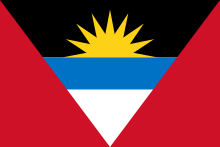 Antigua and Barbuda — 30 days; USD 100 visa waiver fee applies.
Antigua and Barbuda — 30 days; USD 100 visa waiver fee applies. Argentina — 90 days; online registration required, for nationals of China only.
Argentina — 90 days; online registration required, for nationals of China only.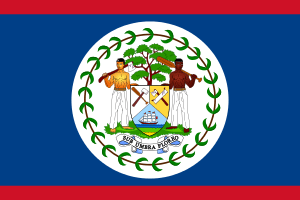 Belize — 30 days; USD 50 visa waiver fee applies.
Belize — 30 days; USD 50 visa waiver fee applies. Chile — 90 days; for nationals of China only.
Chile — 90 days; for nationals of China only.  Colombia — 90 days; for nationals of China, India, Thailand, and Vietnam.
Colombia — 90 days; for nationals of China, India, Thailand, and Vietnam.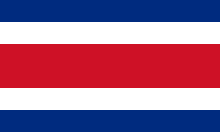 Costa Rica — 30 days or less if the visa is about to expire; must hold a multiple entry visa.
Costa Rica — 30 days or less if the visa is about to expire; must hold a multiple entry visa. Dominican Republic — 90 days;
Dominican Republic — 90 days; El Salvador — 90 days; not applicable to all nationalities.
El Salvador — 90 days; not applicable to all nationalities. Georgia — 90 days within any 180-day period;
Georgia — 90 days within any 180-day period; Guatemala — 90 days; not applicable to all nationalities.
Guatemala — 90 days; not applicable to all nationalities.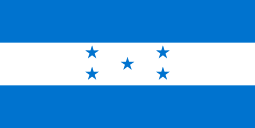 Honduras — 90 days; not applicable to all nationalities.
Honduras — 90 days; not applicable to all nationalities. Jamaica — 30 days; not applicable to all nationalities.
Jamaica — 30 days; not applicable to all nationalities. Mexico — 180 days;[99][100]
Mexico — 180 days;[99][100] Montenegro — 30 days;
Montenegro — 30 days; Nicaragua — 90 days; not applicable to all nationalities.
Nicaragua — 90 days; not applicable to all nationalities. Panama — 30/180 days; must hold a visa valid for at least 2 more entries.
Panama — 30/180 days; must hold a visa valid for at least 2 more entries. Peru — 180 days; for nationals of China only.
Peru — 180 days; for nationals of China only. Philippines — 7 days; for nationals of China and India only.
Philippines — 7 days; for nationals of China and India only. 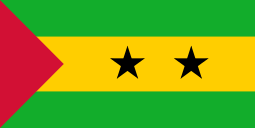 Sao Tome and Principe — 15 days;
Sao Tome and Principe — 15 days; Serbia — 90 days;
Serbia — 90 days; Taiwan — certain nationalities can obtain an online travel authority if holding a valid US visa.
Taiwan — certain nationalities can obtain an online travel authority if holding a valid US visa. Turkey — certain nationalities can obtain an electronic Turkish visa if holding a valid US visa.
Turkey — certain nationalities can obtain an electronic Turkish visa if holding a valid US visa.
C visa
C-1 visa is a transit visa issued to individuals who are travelling in "immediate and continuous transit through the United States enroute to another country". The only reason to enter the United States must be for transit purposes. A subtype C-2 visa is issued to diplomats transiting to and from the Headquarters of the United Nations and is limited to the vicinity of New York City.[101]
D visa
D visa is issued to crew members of sea-vessels and international airlines in the United States. This includes commercial airline pilots and flight attendants, captain, engineer, or deckhand of a sea vessel, service staff on a cruise ship and trainees on board a training vessel. Usually a combination of a C-1 visa and D visa is required.[102]
E visa
Treaty Trader (E-1 visa) and Treaty Investor (E-2 visa) visas are issued to citizens of countries that have signed treaties of commerce and navigation with the United States.[103] They are issued to individuals working in businesses engaged in substantial international trade or to investors (and their employees) who have made a 'substantial investment' in a business in the United States.[104] The variant visa issued only to citizens of Australia is the E-3 visa (E-3D visa is issued to spouse or child of E-3 visa holder and E-3R to a returning E-3 holder).[105]
EB visa
F visa
These visas are issued for foreign students enrolled at accredited US institutions. F-1 visas are for full-time students, F2 visas are for spouses and children of F-1 visa holders and F-3 visas are for "border commuters" who reside in their country of origin while attending school in the United States.[106] They are managed through SEVIS.[107]
G visa
The G visas are issued to diplomats, government officials, and employees who will work for international organizations in the United States. The international organization must be officially designated as such.[108] The G-1 visa is issued to permanent mission members, G-2 visa is issued to representatives of a recognized government traveling temporarily to attend meetings of a designated international organization, G-3 visa is issued to individuals representing non-recognized governments, G-4 visa is for those who are taking up an appointment and G-5 visa is issued to personal employees or domestic workers of G1-G4 visa holders.[109] G1-G4 visas are also issued to family members.[110]
Those working specifically for the North Atlantic Treaty Organization require a NATO visa. NATO–1 visa is issued to permanent representatives of NATO and their staff members, NATO-2 visa is issued to a representative of member state to NATO or its subsidiary bodies, advisor or technical expert of the NATO delegation visiting the United States, a member of the NATO military forces component or a staff member of the NATO representative, NATO-3 visa is issued to official clerical staff accompanying the representative of a NATO member state, NATO-4 visa is issued to foreign national recognized as a NATO official, NATO-5 visa is issued to a foreign national recognized as a NATO expert and NATO-6 visa is issued to a member of the civilian component of the NATO. All NATO visas are issued to immediate family members as well. NATO-7 visas are issued to personal employees or domestic workers of a NATO-1 – NATO-6 visa holders.[110]
H visa
H visas are issued to temporary workers in the United States.
- Specialty Occupations, DOD Cooperative Research and Development Project Workers, and Fashion Models
The discontinued H-1A and H-1C visas existed during periods when the US experienced a shortage of nurses existed from 1989. The H-1A classification was created by the Nursing Relief Act of 1989 and ended in 1995. The H-1C visa was created by the Nursing Relief for Disadvantaged Area Act of 1999 and expired in 2005. Currently nurses must apply for H-1B visas.[111]
The H-1B classification is for professional-level jobs that require a minimum of a bachelor's degree in a specific academic field. In addition, the employee must have the degree or the equivalence of such a degree through education and experience. There is a required wage, which is at least equal to the wage paid by the employer to similarly qualified workers or a prevailing wage for such positions in the geographic regions where the jobs are located. This visa also covers fashion models of distinguished merit and ability.[112][113] H-1B1 visa is the variant issued to citizens of Singapore and Chile.
- Temporary Agricultural Workers
The H-2A visa allows a foreign national entry into the US for temporary or seasonal agricultural work for eligible employers under certain conditions (seasonal job, no available US workers).[114]
- Temporary Non-Agricultural Workers
The H-2B visa allows a foreign national entry into the US for temporary or seasonal non-agricultural work for eligible employers under certain conditions (seasonal job, no available US workers).[115]
- Nonimmigrant Trainee or Special Education Exchange Visitor
The H-3 visa is available to those foreign nationals looking to "receive training in any field of endeavor, other than graduate medical education or training, that is not available in the foreign national’s home country" or " participate in a special education exchange visitor training program that provides for practical training and experience in the education of children with physical, mental, or emotional disabilities.".[116]
- Family members
H-4 visa is issued to immediate family members of H visa holders. They are also eligible for employment.[117]
I visa
The I-1 visa is issued to representatives of the foreign media, including members of the press, radio, film, and print industries travelling to temporarily work in the United States in the profession.[118]
J visa
J-1 visa is issued to participants of work-and study-based exchange visitor programs.[119] The Exchange Visitor Program is carried out under the provisions of the Fulbright-Hays Act of 1961, officially known as the Mutual Educational and Cultural Exchange Act of 1961 (Pub.L. 87–256, 75 Stat. 527). The purpose of the Act is to increase mutual understanding between the people of the United States and the people of other countries by means of educational and cultural exchanges. The Exchange Visitor Program is administered by the Office of Exchange Coordination and Designation in the Bureau of Educational and Cultural Affairs. In carrying out the responsibilities of the Exchange Visitor Program, the Department designates public and private entities to act as exchange sponsors. Spouses and dependents of J-1 exchange visitors are issued a J-2 visa.[120]
Exchange visa categories are:
- Au pair and EduCare[121]
- Camp Counselor[122]
- College and University Student[123]
- Government Visitor[124]
- Intern[125]
- International Visitor[126]
- Physician[127]
- Professor and Research Scholar[128]
- Secondary School Student[129]
- Short-term Scholar[130]
- Specialist[131]
- Summer Work Travel Program participant[132]
- Teacher[133]
- Trainee[134]
Exchange Visitor Pilot Programs exist for citizens of Australia,[135] Ireland,[136] New Zealand[137] and South Korea.[138]
K visa
A K-1 visa is a visa issued to the fiancé or fiancée of a United States citizen to enter the United States. A K-1 visa requires a foreigner to marry his or her U.S. citizen petitioner within 90 days of entry, or depart the United States. Once the couple marries, the foreign citizen can adjust status to become a lawful permanent resident of the United States (Green Card holder).[139] K-2 visa is issued to unmarried children under the age of 21.[140] Foreign same-sex partners of United States citizens are currently recognized by United States Citizenship and Immigration Services (USCIS) and accordingly can be sponsored for K-1 visas and for permanent resident status.[141]
K-3/K-4 visas are issued to foreign spouses and children of US citizens.[142]
L visa
The L-1 classification is for international transferees who have worked for a related organization abroad for at least one continuous year in the past three years and who will be coming to the United States to work in an executive or managerial (L-1A) or specialized knowledge capacity (L-1B).[143] L-2 visa is issued to dependent spouse and unmarried children under 21 years of age of qualified L-1 visa holders.
M visa
The M-1 visa is a type of student visa reserved for vocational and technical schools. Students in M-1 status may not work on or off campus while studying, and they may not change their status to F-1. The M-2 visa permits the spouse and minor children of an M-1 vocational student to accompany him or her to the United States.[106]
O visa
O visa is a classification of non-immigrant temporary worker visa granted to an alien "who possesses extraordinary ability in the sciences, arts, education, business, or athletics (O-1A visa), or who has a demonstrated record of extraordinary achievement in the motion picture or television industry and has been recognized nationally or internationally for those achievements," (O-1B visa) and to certain assistants (O-2 visa) and immediate family members of such aliens (O-3 visa).[144]
P visa
P visas are issued to individuals or team athletes, or member of an entertainment group including persons providing essential support services (P-1 visa), artists or entertainers (individual or group) under a reciprocal exchange program (P-2 visa) and artists or entertainers (individual or group) visiting to perform, teach or coach under a program that is culturally unique.[145] P-4 visas are issued to spouses, or children under the age of 21, of a P-1, P-2, or P-3 alien and who is accompanying, or following to join.
Q visa
Q visa is issued to participants in an international cultural exchange program.[145]
R visa
R-1 visa is issued to temporary religious workers. They must have been a member of a religious denomination having a bona fide non-profit religious organization in the United States for at least 2 years.[146] R-2 visa is issued to dependent family members.[147]
S visa
S visas are nonimmigrant visas issued to individuals who have assisted law enforcement as a witness or informant. There is a limit of 200 S visas a year.[148] A law enforcement agency can then submit an application for resident alien status i.e., a green card on behalf of the witness or informant once the individual has completed the terms and conditions of his or her S visa.[149]
TN visa
NAFTA Professional (TN) visa allows citizens of Canada and Mexico whose profession is on the NAFTA list[150] and who must hold a bachelor's degree to work in the United States on a prearranged job. Canadian citizens usually do not require a visa to work under the TN status (unless they live outside Canada with non-Canadian family members) while Mexican citizens require a TN visa. Spouse and dependent children of a TN professional can be admitted into the United States in the TD status.[151]
U and T visas
U-1 visa is a nonimmigrant visa which is set aside for victims of crimes (and their immediate family members) who have suffered substantial mental or physical abuse and are willing to assist law enforcement and government officials in the investigation or prosecution of the criminal activity.[152] Subtypes of this visa are U-2 issued to spouses of U-1, U-3 issued to children of U-1, U-4 issued to parents of U-1 under the age of 21 and U-5 issued to unmarried siblings under the age of 18 of U-1 who is under 21.
T-1 visa is issued to victims of severe forms of human trafficking. Holders may adjust their status to permanent resident status.[153] Subtypes of this visa are T-2 issued to spouses of T-1, T-3 issued to children of T-1, T-4 issued to parents of T-1 under the age of 21 and T-5 issued to unmarried siblings under the age of 18 of T-1 who is under 21.
V visa
The V visa is a temporary visa available to spouses and minor children (unmarried, under 21) of U.S. lawful permanent residents (LPR, also known as green card holders). It allows permanent residents to achieve family unity with their spouses and children while the immigration process takes its course. It was created by the Legal Immigration Family Equity Act of 2000.[154] The Act is to relieve those who applied for immigrant visas on or before December 21, 2000. Practically, the V visa is currently not available to spouses and minor children of LPRs who have applied after December 21, 2000.[155]
List of US visa types
All US visa types and subtypes are listed below:[156][157]
Immigrant visas
| Symbol | Description |
|---|---|
| Immediate Relatives | |
| IR-1 | Spouse of U.S. citizen |
| IR-2 | Child of U.S. citizen |
| IR-3 | Orphan from a non-Hague country (i.e., not a party to the Hague Adoption Convention) adopted abroad by U.S. citizen |
| IR-4 | Orphan from a non-Hague country to be adopted in the United States by U.S. citizen |
| IR-5 | Parent of U.S. citizen at least 21 years of age |
| IH-3 | Orphan from a Hague country adopted abroad by U.S. citizen |
| IH-4 | Orphan from a Hague country to be adopted in the United States by U.S. citizen |
| CR-1 | Spouse of U.S. citizen (conditional status) |
| CR-2 | Child of U.S. citizen (conditional status) |
| IW-1 | Certain spouses of deceased U.S. citizens |
| IW-2 | Child of IW-1 IB-1 |
| IB-1 | Self-petition spouse of U.S. citizen |
| IB-2 | Self-petition child of U.S. citizen |
| IB-3 | Child of IB-1 |
| VI-5 | Parent of U.S. citizen who acquired permanent resident status under the Virgin Islands Nonimmigrant Alien Adjustment Act |
| Vietnam Amerasian Immigrants | |
| AM-1 | Vietnam Amerasian principal |
| AM-2 | Spouse/Child of AM-1 |
| AM-3 | Natural mother of AM-1 (and spouse or child of such mother), or person who has acted in effect as the mother, father, or next-of-kin of AM-1 (and spouse or child of such person) |
| Special Immigrants | |
| SB-1 | Returning resident |
| SC-1 | Certain persons who lost U.S. citizenship by marriage |
| SC-2 | Certain persons who lost U.S. citizenship by serving in foreign armed forces |
| Family-Sponsored Immigrants: First Preference | |
| F11 | Unmarried son or daughter of U.S. citizen |
| F12 | Child of F11 |
| B11 | Self-petition unmarried son or daughter of U.S. citizen |
| B12 | Child of B11 |
| Family-Sponsored Immigrants: Second Preference (Subject to Country Limitations) | |
| F21 | Spouse of permanent resident |
| F22 | Child of permanent resident |
| F23 | Child of F21 or F22 |
| F24 | Unmarried son/daughter of permanent resident |
| F25 | Child of F24 |
| B21 | Self-petition spouse of permanent resident |
| B22 | Self-petition child of permanent resident |
| B23 | Child of B21 or B22 |
| B24 | Self-petition unmarried son/daughter of permanent resident |
| B25 | Child of B24 |
| Family-Sponsored Immigrants: Second Preference (Exempt from Country Limitations) | |
| FX1 | Spouse of permanent resident |
| FX2 | Child of permanent resident |
| FX3 | Child of FX1 or FX2 |
| BX1 | Self-petition spouse of permanent resident |
| BX2 | Self-petition child of permanent resident |
| BX3 | Child of BX1 or BX2 |
| Family-Sponsored Immigrants: Third Preference | |
| F31 | Married son or daughter of U.S. citizen |
| F32 | Spouse of F31 |
| F33 | Child of F31 |
| B31 | Self-petition married son or daughter of U.S. citizen B32 |
| B32 | Spouse of B31 |
| B33 | Child of B31 |
| Family-Sponsored Immigrants: Fourth Preference | |
| F41 | Brother or sister of U.S. citizen who is at least 21 years of age |
| F42 | Spouse of F41 |
| F43 | Child of F41 |
| Employment-Based Immigrants: First Preference (Priority Workers) | |
| E11 | Person with extraordinary ability in the sciences, arts, education, business, or athletics |
| E12 | Outstanding professor or researcher |
| E13 | Multinational executive or manager |
| E14 | Spouse of E11, E12, or E13 |
| E15 | Child of E11, E12, or E13 |
| Employment-Based Immigrants: Second Preference (Professionals Holding Advanced Degrees or Persons of Exceptional Ability) | |
| E21 | Professional holding advanced degree or person of exceptional ability in the sciences, arts, or business |
| E22 | Spouse of E21 |
| E23 | Child of E21 |
| Employment-Based Immigrants: Third Preference (Skilled Workers, Professionals, and Other Workers) | |
| E31 | Skilled worker |
| E32 | Professional holding baccalaureate degree |
| E34 | Spouse of E31 or E32 |
| E35 | Child of E31 or E32 |
| EW3 | Other workers
(subgroup numerical limit) |
| EW4 | Spouse of EW3 |
| EW5 | Child of EW3 |
| Employment-Based Immigrants: Fourth Preference (Certain Special Immigrants) | |
| BC-1 | Certain international broadcasters |
| BC-2 | Spouse of BC-1 |
| BC-3 | Child of BC-1 |
| SD-1 | Minister of religion |
| SD-2 | Spouse of SD-1 |
| SD-3 | Child of SD-1 |
| SE-1 | Certain employees or former employees of the U.S. Government abroad |
| SE-2 | Spouse of SE-1 |
| SE-3 | Child of SE-1 |
| SF-1 | Certain former employees of the Panama Canal Company or Canal Zone Government |
| SF-2 | Spouse or child of SF-1 |
| SG-1 | Certain former employees of the U.S. Government in the Panama Canal Zone SG-2 |
| SH-2 | Spouse or child of SH-1 |
| SJ-2 | Spouse or child of SJ-1 (certain foreign medical graduates) |
| SK-1 | Certain retired international organization employees |
| SK-2 | Spouse of SK-1 SK-3 |
| SK-4 | Certain surviving spouses of deceased international organization employees SL-1 |
| SM-1 | Person recruited outside the United States who has served, or is enlisted to serve, in the U.S. Armed Forces for 12 years (became eligible after October 1, 1991) |
| SM-2 | Spouse of SM-1 |
| SM-3 | Child of SM-1 |
| SM-4 | Person recruited outside the United States who has served, or is enlisted to serve, in the U.S. Armed Forces for 12 years (eligible as of October 1, 1991) |
| SM-5 | Spouse or child of SM-4 |
| SN-1 | Certain retired NATO-6 civilian employees |
| SN-2 | Spouse of SN-1 |
| SN-3 | Certain unmarried sons or daughters of NATO-6 civilian employees |
| SN-4 | Certain surviving spouses of deceased NATO-6 civilian employees |
| SR-1 | Certain religious workers (subgroup numerical limit) |
| SR-2 | Spouse of SR-1 |
| SR-3 | Child of SR-1 |
| Employment-Based Immigrants: Fifth Preference (Employment Creation - Investors) (Conditional Status) | |
| C51 | Employment creation outside targeted area |
| C52 | Spouse of C51 |
| C53 | Child of C51 |
| T51 | Employment creation in targeted rural/high unemployment area (subgroup numerical set-aside) |
| T52 | Spouse of T51 |
| T53 | Child of T51 |
| R51 | Investor pilot program, not in targeted area |
| R52 | Spouse of R51 |
| R53 | Child of R51 |
| I51 | Investor pilot program, in targeted area |
| I52 | Spouse of I51 |
| I53 | Child of I51 |
| Other Numerically Limited Categories: Diversity Immigrants | |
| DV-1 | Diversity immigrant |
| DV-2 | Spouse of DV-1 |
| DV-3 | Child of DV-1 |
Nonimmigrant visas
| Symbol | Description |
|---|---|
| A-1 | Head of state and immediate family, prime minister and immediate family, government minister, ambassador, career diplomat or consular officer, or immediate family |
| A-2 | Minister of state, other foreign government official or employee, or immediate family |
| A-3 | Attendant, servant, or personal employee of A-1 or A-2, and immediate family |
| B-1 | Temporary visitor for business, domestic employees, academics, researchers and students |
| B-2 | Temporary visitor for holiday, tourism, medical treatment |
| B1/B2 | Temporary visitor for business & pleasure |
| C-1 | Person in transit |
| C-2 | Person in transit to United Nations Headquarters district under Section 11 (3), (4), or (5) of the Headquarters Agreement |
| C-3 | Foreign government official, immediate family, attendant, servant or personal employee, in transit |
| D | Crewmember (sea or air) |
| E-1* | Treaty trader, spouse and children |
| E-2* | Treaty investor, spouse and children |
| E-3* | Treaty traders and investors: Australian Free Trade Agreement |
| E-3D* | Spouse or child of E3 |
| E-3R* | Returning E3 |
| F-1 | Student (academic or language training program) |
| F-2 | Spouse or child of F-1 |
| F-3 | Canadian or Mexican national commuter student in an academic or language training program |
| G-1 | Principal resident representative of recognized foreign member government to international organization, staff, and immediate family |
| G-2 | Other representative of recognized foreign member government to international organization, and immediate family |
| G-3 | Representative of nonrecognized or nonmember foreign government to international organization, and immediate family |
| G-4 | International organization officer or employee, and immediate family |
| G-5 | Attendant, servant, or personal employee of G-1 through G-4, and immediate family |
| GB | Temporary visitors: for business, visa waiver, Guam |
| GT | Temporary visitors: for pleasure, visa waiver, Guam |
| H-1B* | Alien in a specialty occupation (profession) |
| H1B1 | Chilean or Singaporean national to work in a specialty occupation |
| H-2A | Temporary worker performing agricultural services unavailable in the United States |
| H-2B | Temporary worker performing other services unavailable in the United States |
| H-3 | Temporary workers and trainees: industrial trainees |
| H-4* | Temporary workers and trainees: spouses and children of H-1, H-2, and H-3 workers |
| I | Representative of foreign information media, spouse and children |
| J-1 | Exchange visitor |
| J-2 | Spouse or child of exchange visitor |
| K-1* | Fiance(e) of U.S. citizen |
| K-2* | Child of fiance(e) of U.S. citizen |
| K-3* | Spouse of U.S. citizen awaiting availability of immigrant visa |
| K-4* | Child of K-3 |
| L-1* | Intracompany transferee (executive, managerial, and specialized personnel continuing employment with international firm or corporation) |
| L-2* | Spouse or child of intracompany transferee |
| M-1 | Vocational student or other nonacademic student |
| M-2 | Spouse or child of M-1 |
| M-3 | Border commuter student (vocational or nonacademic)[158] |
| N-8 | Parent of SK-3 special immigrant |
| N-9 | Child of N-8 or of SK-1, SK-2 or SK-4 special immigrant |
| NATO-1 | Principal permanent representative of member state to NATO (including any of its subsidiary bodies) resident in the U.S. and resident members of official staff; Secretary General, Assistant Secretaries General, and Executive Secretary of NATO; other permanent NATO officials of similar rank, and members of immediate family |
| NATO-2 | Other representatives of member states to NATO (including any of its subsidiary bodies) including representatives, advisers, and technical experts of delegations, and members of immediate family; dependents of members of a force entering in accordance with the provisions of the NATO Status-of-Forces Agreement or in accordance with provisions of the "Protocol on the Status of International Military Headquarters"; members of such a force if issued visas |
| NATO-3 | Official clerical staff accompanying a representative of member state to NATO (including any of its subsidiary bodies), and members of immediate family |
| NATO-4 | Officials of NATO (other than those classifiable as NATO-1), and members of immediate family |
| NATO-5 | Experts, other than officials classifiable as NATO-4, employed in missions on behalf of NATO, and their dependents |
| NATO-6 | Members of a civilian component accompanying a force entering in accordance with the provisions of the NATO Status-of-Forces Agreement; members of a civilian component attached to or employed by an Allied Headquarters under the "Protocol on the Status of International Military Headquarters" set up pursuant to the North Atlantic Treaty; and their dependents |
| NATO-7 | Attendant, servant, or personal employee of NATO-1 through NATO-6 classes, and immediate family |
| O-1* | Person with extraordinary ability in the sciences, arts, education, business, or athletics |
| O-2* | Person accompanying and assisting in the artistic or athletic performance by O-1 |
| O-3* | Spouse or child of O-1 or O-2 |
| P-1* | Internationally recognized athlete or member of an internationally recognized entertainment group |
| P-2* | Artist or entertainer in a reciprocal exchange program |
| P-3* | Artist or entertainer in a culturally unique program |
| P-4* | Spouse or child of P-1, P-2, or P-3 |
| Q-1 | Participant in an international cultural exchange program |
| R-1 | Person in a religious occupation |
| R-2 | Spouse or child of R-1 |
| S-5 | Informant possessing information on criminal activity |
| S-6 | Informant possessing information on terrorism |
| S-7 | Spouse, married or unmarried son or daughter, or parent of S-5 or S-6 |
| SIJS | Special Immigrant Juvenile Status: Qualifying children present in the U.S. who are declared dependents of a juvenile court and who would be harmed if returned to their home country |
| TN | NAFTA professional |
| TD | Spouse or child of TN |
| T-1 | Victim of a severe form of trafficking in persons |
| T-2 | Spouse of T-1 |
| T-3 | Child of T-1 |
| T-4 | Parent of T-1 under 21 years of age |
| T-5 | Under-18 unmarried sibling of T-1 |
| U-1 | Victim of criminal activity |
| U-2 | Spouse of U-1 |
| U-3 | Child of U-1 |
| U-4 | Parent of U-1 under 21 years of age |
| U-5 | Under-18 unmarried sibling of U-1 under 21 at time of filing |
| V-1* | Spouse of lawful permanent resident awaiting availability of immigrant visa |
| V-2* | Child of lawful permanent resident awaiting availability of immigrant visa |
| V-3* | Derivative child of V-1 and V-2 |
| WB | Temporary visitors: visa waiver, business |
| WT | Temporary visitors: visa waiver, pleasure |
* Persons with H-1B visas, H-4 visas (as immediate family members of H-1B visa holders), K visas, L visas, and V visas are permitted to have dual intent under the Immigration and Nationality Act. Federal regulations also appear to recognize dual intent O visas, P visas, and E visas.
Visa denial
Section 221(g) of the Immigration and Nationality Act defined several classes of aliens ineligible to receive visas.
Grounds for denial may include, but are not limited to:
- Health grounds
- Criminal history
- Security fears
- Public charge (charge means burden in this context)
- Illegal entrants or immigration violators
- Failure to produce requested documents
- Ineligible for citizenship
- Previously removed from the US
- The spouse of a US Citizen is almost always denied a visitor's (B1/B2) visa on the grounds that the spouse might want to stay in the United States. However, the spouse of a USC is able to immigrate to the US without much of a hurdle.
Section 214(b) of the Immigration and Nationality Act (also cited as 8 United States Code § 1184(b))[162] states that most aliens must be presumed to be intending to remain in the US, until and unless they are able to show that they are entitled to non-immigrant status. This means there are two sides to a 214(b) denial. Either
- The applicant didn’t convince the consular officer that he didn’t intend to stay in the US permanently, or
- The applicant didn’t convince the consular officer that he was qualified for the visa for which he had applied.
An example of a denial based upon the first ground would be an applicant for an F-1 student visa who the consular officer felt was secretly intending to remain in the US permanently.
An example of a denial based upon the second ground would be an H-1B applicant who couldn’t prove he possessed the equivalent of a US bachelor’s degree in a specialty field—such an equivalency being a requirement for obtaining an H-1B visa.
In order to thereafter obtain a visa applicants are recommended to objectively evaluate their situation, see in what way they fell short of the visa requirements, and then reapply.[163]
In 2005, Indian Prime Minister Narendra Modi (then Chief Minister of Gujarat) was denied a diplomatic visa to the United States. In addition, the B-1/B-2 visa that had previously been granted to him was also revoked, under a section of the Immigration and Nationality Act which makes any foreign government official who was responsible or "directly carried out, at any time, particularly severe violations of religious freedom" ineligible for the visa.[164] Modi is the only person ever denied a visa to the U.S. under this provision.[165]
Exceptions
There are cases when a US visa has been granted to aliens who were technically ineligible. Japanese mafia (yakuza) leader Tadamasa Goto and three others were issued visas for travel between 2000 and 2004 to undergo liver transplant surgery at UCLA Medical Center.[166] The FBI had aided the men in the visa application process hoping that they would provide information regarding yakuza activities in the US.[166]
See also
- Electronic System for Travel Authorization
- European Union visa lists
- Security Advisory Opinion
- Department of Homeland Security
- U.S. Citizenship and Immigration Services
- U.S. Customs and Border Protection
- U.S. Immigration and Customs Enforcement
- United States visa embargo against Iran
- Visa Waiver Program
- Visa requirements for United States citizens
References
- ↑ "Visa Information - USA". Timatic. IATA. Retrieved 17 December 2013.
- ↑ Lewis, Loida; Madlansacay, Len (September 1998). How to Get a Green Card (3rd ed.). Nolo Press. p. 1/5. ISBN 0-87337-423-1.
- ↑ "Visa Statistics". US Department of State Visa Statistics.
- ↑ Border Countries: Canada, Mexico and Bermuda
- 1 2 3 4 5 6 7 8 Grossman, Neil; Golden, Howard; Thurnell, Tracy (April 1, 2009). "GRIST InDepth: Hiring noncitizens - an immigration law primer for US employers" (PDF). Mercer.
- ↑ What is a Visa? U.S. State Department
- ↑ FAQs on the Arrival-Departure Record (I-94 Form) & Crewman Landing Permit (I-95 Form). U.S. Customs and Border Protection. Accessed May 1, 2008
- ↑ "How to get visa for America". What is USA News. 4 April 2014. Retrieved 2013-12-21.
- ↑ Page 7 of IATA document accessed 5 December 2015 at
- ↑ "Federated States of Micronesia, Republic of the Marshall Islands, and Palau". United States Citizenship and Immigration Services. United States Citizenship and Immigration Services. Retrieved 6 February 2016.
- 1 2 Citizens of Canada and Bermuda
- ↑
- ↑ Canadians Requiring Visas
- ↑ http://www.cbsa-asfc.gc.ca/prog/nexus/elig-admis-eng.html
- ↑ "Visa Exemptions for Bermudians". Hamilton.usconsulate.gov. Retrieved 2016-11-12.
- ↑ "U.S. Embassy in Majuro, Marshall Islands: Non-Immigrant Visas". Majuro.usembassy.gov. 2010-08-12. Retrieved 2012-07-12.
- ↑ "U.S. Embassy in Kolonia, Micronesia". Kolonia.usembassy.gov. 2012-05-06. Retrieved 2012-07-12.
- ↑ "Embassy of the Republic of Palau in Washington". Palauembassy.com. Retrieved 2012-07-12.
- ↑
- ↑ Visa Waiver Program (VWP)
- 1 2 3 4 5 6 7 8 9 10 11 12 Joined on October 1, 1991.
- ↑ Joined July 29, 1996.
- ↑ Joined on July 29, 1993.
- ↑ Joined on February 28, 2014.
- 1 2 3 4 5 6 7 8 Joined on November 17, 2008.
- ↑ Including
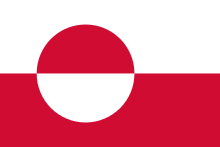 Greenland and
Greenland and 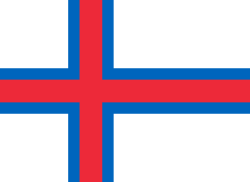 Faroe Islands.
Faroe Islands. - ↑ Including
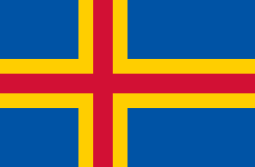 Åland Islands.
Åland Islands. - 1 2 Joined on July 1, 1989.
- 1 2 Joined on July 15, 1989.
- ↑ Joined on April 5, 2010.
- ↑ Joined on April 1, 1995.
- 1 2 Joined on July 29, 1989.
- ↑ Joined on December 15, 1988.
- ↑ Joined on July 29, 1991.
- ↑ Including
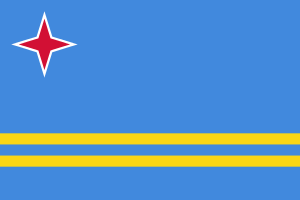 Aruba,
Aruba, 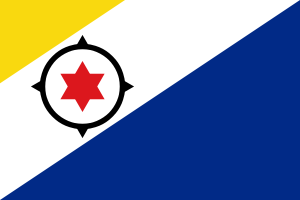 Bonaire,
Bonaire, 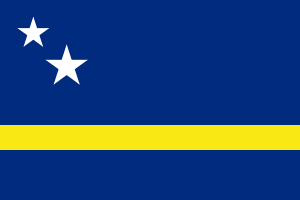 Curaçao,
Curaçao, 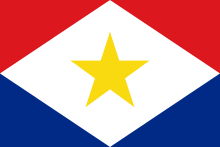 Saba,
Saba, 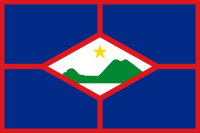 Sint Eustatius and
Sint Eustatius and 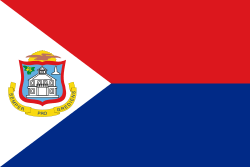 Sint Maarten.
Sint Maarten. - 1 2 Joined on August 9, 1999.
- ↑ Including
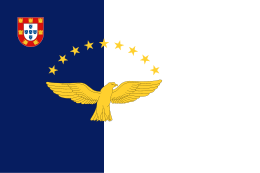 Azores and
Azores and  Madeira.
Madeira. - ↑ Joined on September 30, 1997.
- ↑ Joined on November 1, 2012.
- ↑ Citizens with Taiwanese national ID number only.
- ↑ Joined on July 1, 1988.
- ↑ Full British citizens only. Details about the Visa Waiver Program
- ↑ 'Travelling to the US without a visa,' http://www.usvisalawyers.co.uk/article6.htm, accessed October 8, 2013.
- ↑ http://www.cbp.gov/xp/cgov/travel/id_visa/esta/
- ↑ DHS Announces Further Travel Restrictions for the Visa Waiver Program
- ↑ United States Begins Implementation of Changes to the Visa Waiver Program
- ↑ "Bahamian citizen document requirements". Retrieved 2016-07-12.
- ↑ 8 CFR 212.1(b)(2), United States Government Publishing Office, May 28, 2015.
- ↑ BVI & USVI Visa Waiver Scheme
- ↑ Embassy of the United States in Kingston, Jamaica: Visa Waiver Program
- ↑ "Cayman Islands Government: New U.S. Travel Requirements". Gov.ky. Retrieved 2016-07-12.
- ↑ APPLICATION FORM FOR A UNITED STATES VISA WAIVER
- ↑ "TURKS AND CAICOS ISLANDS CITIZENS" (PDF). Retrieved 2016-07-12.
- ↑ Guam-CNMI Visa Waiver Program
- ↑ Trip Essentials
- ↑ Visa Requirements
- ↑ "Russian Citizens Now Eligible to Travel to Guam Visa-Free". 2012-01-26. Retrieved 2015-06-13.
- ↑ "Important update in entry requirements parole for citizens of the Russian Federation and the People's Republic of China for the CNMI only" (PDF). 2009-11-16. Retrieved 2015-06-13.
- ↑
- 1 2 3 "Russia, US set visa-free travel between Alaska & Chukotka". RT.com. TV-Novosti. 23 July 2015.
- ↑
- ↑
- ↑
- ↑
- ↑
- ↑
- ↑
- ↑
- ↑
- ↑
- ↑
- ↑
- ↑
- ↑
- ↑
- ↑ FWS: Navassa Island National Wildlife Refuge, accessdate: June 7, 2015
- ↑
- ↑ Including Border Crossing Cards
- ↑
- ↑ 2014 Yearbook of Immigration Statistics
- ↑ Statistical Yearbook 2014 pages 91-92
- ↑ Data for arrivals by air only
- ↑
- ↑ Embassy of the United States: Diplomatic Visas (A-1 & A-2) | Embassy of the United States, accessdate: June 6, 2015
- ↑ state.gov: Visitor Visa, accessdate: June 6, 2015
- ↑ state.gov: Border Crossing Card, accessdate: June 6, 2015
- ↑ "CBP Announces the Electronic Visa Update System". USCBP. Retrieved 2016-05-24.
- ↑ "Electronic Visa Update System (EVUS) Frequently Asked Questions". USCBP. Retrieved 2016-05-24.
- ↑ Visa Reciprocity Tables
- 1 2 3 4 5 6 7 8 9 10 Single entry
- ↑ Double entry
- ↑ Mandatory EVUS registration required from November 29 2016
- 1 2 3 Double entry.
- ↑ Except Australia and Taiwan.
- ↑
- ↑ Adjusted Refusal Rate 2014
- ↑ Adjusted Refusal Rate 2015
- 1 2 Entry/Exit Overstay Report Fiscal Year 2015
- ↑ Countries and regions that require a visa to travel to Mexico, Instituto Nacional de Migración, September 27, 2013.
- ↑ Timatic - Visa information for Mexico
- ↑ state.gov: Transit Visa, accessdate: June 6, 2015
- ↑ state.gov: Crewmember Visa, accessdate: June 6, 2015
- ↑ state.gov: Treaty Countries, accessdate: June 6, 2015
- ↑ "Treaty Traders (E-1) and Treaty Investors (E-2)". Gudeon & McFadden. Retrieved 20 May 2016.
- ↑ Embassy of the United States Canberra, Australia: E-3 Visa | Embassy of the United States Canberra, Australia, accessdate: June 6, 2015
- 1 2 state.gov: Student Visa, accessdate: June 6, 2015
- ↑ ICE: Student and Exchange Visitor Program | ICE, accessdate: June 6, 2015
- ↑
- ↑ state.gov: Employee of International Organization & NATO Visa, accessdate: June 6, 2015
- 1 2 state.gov: Employee of International Organization & NATO Visa, accessdate: June 6, 2015
- ↑ Monica, Edna. "USA Work Visa for Nurses". Iowa State University.
- ↑ U.S. Department of Labor: H-1B Program - Wage and Hour Division (WHD) - U.S. Department of Labor, accessdate: June 6, 2015
- ↑ USCIS: H-1B Specialty Occupations, DOD Cooperative Research and Development Project Workers, and Fashion Models | USCIS, accessdate: June 6, 2015
- ↑ USCIS: H-2A Temporary Agricultural Workers | USCIS, accessdate: June 6, 2015
- ↑ USCIS: H-2B Temporary Non-Agricultural Workers | USCIS, accessdate: June 6, 2015
- ↑ USCIS: H-3 Nonimmigrant Trainee or Special Education Exchange Visitor | USCIS, accessdate: June 6, 2015
- ↑ "DHS Extends Eligibility for Employment Authorization to Certain H-4 Dependent Spouses of H-1B Nonimmigrants Seeking Employment-Based Lawful Permanent Residence". USCIS. Retrieved 25 February 2015.
- ↑ state.gov: Media Visa, accessdate: June 6, 2015
- ↑ J-1 Visa: J-1 Visa Basics | J-1 Visa, accessdate: June 6, 2015
- ↑ J-1 Visa: About the J-2 Visa | J-1 Visa Basics | J-1 Visa, accessdate: June 6, 2015
- ↑ J-1 Visa: Programs | Au Pair | Programs | J-1 Visa, accessdate: June 6, 2015
- ↑ J-1 Visa: Programs | Camp Counselor | Programs | J-1 Visa, accessdate: June 6, 2015
- ↑ J-1 Visa: Programs | College And University Student | Programs | J-1 Visa, accessdate: June 6, 2015
- ↑ J-1 Visa: Programs | Government Visitor | Programs | J-1 Visa, accessdate: June 6, 2015
- ↑ J-1 Visa: Programs | Intern | Programs | J-1 Visa, accessdate: June 6, 2015
- ↑ J-1 Visa: Programs | International Visitor | Programs | J-1 Visa, accessdate: June 6, 2015
- ↑ J-1 Visa: Programs | Physician | Programs | J-1 Visa, accessdate: June 6, 2015
- ↑ J-1 Visa: Programs | Professor And Research Scholar | Programs | J-1 Visa, accessdate: June 6, 2015
- ↑ J-1 Visa: Programs | Secondary School Student | Programs | J-1 Visa, accessdate: June 6, 2015
- ↑ J-1 Visa: Programs | Short Term Scholar | Programs | J-1 Visa, accessdate: June 6, 2015
- ↑ J-1 Visa: Programs | Specialist | Programs | J-1 Visa, accessdate: June 6, 2015
- ↑ J-1 Visa: Programs | Summer Work Travel | Programs | J-1 Visa, accessdate: June 6, 2015
- ↑ J-1 Visa: Programs | Teacher | Programs | J-1 Visa, accessdate: June 6, 2015
- ↑ J-1 Visa: Programs | Trainee | Programs | J-1 Visa, accessdate: June 6, 2015
- ↑ Embassy of the United States Canberra, Australia: Student Work and Travel Pilot Program | Embassy of the United States Canberra, Australia, accessdate: June 6, 2015
- ↑ Guidelines for Administration of the Intern Work and Travel Pilot Program with Ireland
- ↑ Embassy of the United States: New Zealand and Australia Twelve-Month Student Work and Recent Graduate Travel Programs | Embassy of the United States, accessdate: June 6, 2015
- ↑
- ↑ USCIS: Fiancé(e) Visas | USCIS, accessdate: June 6, 2015
- ↑ Nolo.com: Bringing Children Along on a K-1 Fiance Visa (K-2 Visas) | Nolo.com, accessdate: June 6, 2015
- ↑ 'Same-Sex Marriage and Spousal Visas,' http://www.usvisalawyers.co.uk/article23.html, accessed October 1, 2013.
- ↑ USCIS: K-3/K-4 Nonimmigrant Visas | USCIS, accessdate: June 6, 2015
- ↑ USCIS: L-1 Visa | USCIS, accessdate: June 6, 2015
- ↑ "O-1 Visa: Individuals with Extraordinary Ability or Achievement". Retrieved 2012-09-16.
- 1 2 state.gov: Temporary Worker Visa, accessdate: June 6, 2015
- ↑ USCIS: R-1 Temporary Nonimmigrant Religious Workers | USCIS, accessdate: June 6, 2015
- ↑ state.gov: Religious Worker Visa, accessdate: June 6, 2015
- ↑ USDOJ: S Visa Program -- Eligibility, accessdate: December 31, 2015
- ↑ USCIS: Green Card for an Informant (S Nonimmigrant), accessdate: December 31, 2015
- ↑ NAFSA: 8 CFR § 214.6, accessdate: June 6, 2015
- ↑ state.gov: Visas for Canadian and Mexican NAFTA Professional Workers, accessdate: June 6, 2015
- ↑ state.gov: Victims of Human Trafficking, accessdate: June 6, 2015
- ↑ USCIS: Green Card for a Victim of Trafficking (T Nonimmigrant) | USCIS, accessdate: June 6, 2015
- ↑ "Immigration through Legal Immigration Family Equity Act (LIFE) of 2000". US Citizenship and Immigration Services. Retrieved 2007-05-01.
- ↑ USCIS: V Nonimmigrant Visas | USCIS, accessdate: June 6, 2015
- ↑ state.gov: Directory of Visa Categories, accessdate: June 6, 2015
- ↑ Embassy of the United States Dublin, Ireland: Nonimmigrant Visa Classification Symbols | Embassy of the United States Dublin, Ireland, accessdate: June 6, 2015
- ↑ "Students and Exchange Visitors". Retrieved 2011-09-11.
- ↑ "Immigration Classifications and Visa Categories - ARCHIVE as of 2010-Jan-28. Page no longer available.". United States Citizenship and Immigration Services. Archived from the original on February 28, 2008. Retrieved 2010-01-28.
- ↑ "Types of Visas for Temporary Visitors". Retrieved 2011-09-11.
- ↑ "Types of Visas for Temporary Visitors". Retrieved 2011-09-11.
- ↑ Immigration and Nationality Act, 8 USC Sec. 1158
- ↑ "A 214(b) Denial: What It Means, What You Can Do". Usvisalawyers.co.uk.
- ↑ "No entry for Modi into US: visa denied". The Times of India. 18 March 2005. Retrieved 3 February 2012.
- ↑ Mann, James (2 May 2014). "Why Narendra Modi Was Banned From the U.S.". Retrieved 3 June 2014.
- 1 2 Charles Ornstein and John M. Glionna, Los Angeles Times After livers, cash to UCLA May 31, 2008
External links
| Wikimedia Commons has media related to Visas of the United States. |
- U.S. Visas, Bureau of Consular Affairs, U.S. Department of State
- List of diplomatic missions of the U.S.